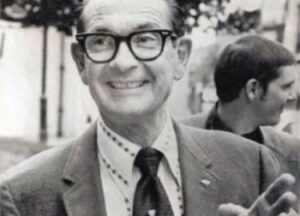Richard Milhous Nixon (1913 –1994) was the 37th President of the United States,serving from 1969 to 1974,when he became the only president to resign the office.
Medic has obtained the Official Military Personnel Records of Richard Nixon from the National Archives in Saint Louis. The record categories are: Service Documents 1; Service Documents 2; Service Documents 3; Service Documents 4; Service Documents 5; Awards,Decorations,and Commendations; Efficiency Record 1; Efficiency Record 2; Efficiency Record 3; Medical Records; Correspondence; Other Original Documents, Reference Correspondence.
In his first term in office Nixon concluded that the war was unwinnable and sought to end it quickly. In March 1969,employing his “madman theory” Nixon approved a secret bombing campaign in Cambodia. By one measurement more bombs were dropped on Cambodia than the Allies dropped during World War II. In mid 1969,Nixon launched efforts which lead to peace talks in Paris. In May 1969 he proposed to withdraw all US troops from South Vietnam if the North did so and the South held internationally supervised elections which included the Viet Cong.
In July 1969,amid protests at home demanding an immediate pullout,Nixon implemented “Vietnamization,” the replacement of American troops with ARVN soldiers. In late April Nixon announced the ground invasion of Cambodia. Its purpose was to disrupt and destroy NVA supplies and to deny sanctuary. Nixon’s campaign promise to curb the war,contrasted with the escalated bombing and invasion,led to claims of a “credibility gap.”
In 1971,excerpts from the Pentagon Papers,leaked by Daniel Ellsberg,were published by The New York Times and The Washington Post. At the urging of Henry Kissinger,Nixon tried to prevent publication,but the Supreme Court ruled in favor of the press.
As U.S. troop withdrawals continued,the draft was reduced and in 1973 ended. A cease fire following the 1973 Paris Peace Accords allowed for the withdrawal of all American forces. However the 160,000 NVA in the South were allowed to stay in place. Soon after American forces departed, fighting broke out. The North Vietnamese Army conquered the South in 1975.
As a result of the Watergate scandal Nixon resigned in August 1974.
_____________
The Naval History and Heritage Command has provided a narrative summary of Nixon’s military service.

Richard Nixon
Richard Milhous Nixon (1913 –1994) was the 37th President of the United States,serving from 1969 to 1974,when he became the only president to resign the office.
Medic has obtained the Official Military Personnel Records of Richard Nixon from the National Archives in Saint Louis. The record categories are: Service Documents 1; Service Documents 2; Service Documents 3; Service Documents 4; Service Documents 5; Awards,Decorations,and Commendations; Efficiency Record 1; Efficiency Record 2; Efficiency Record 3; Medical Records; Correspondence; Other Original Documents, Reference Correspondence.
In his first term in office Nixon concluded that the war was unwinnable and sought to end it quickly. In March 1969,employing his “madman theory” Nixon approved a secret bombing campaign in Cambodia. By one measurement more bombs were dropped on Cambodia than the Allies dropped during World War II. In mid 1969,Nixon launched efforts which lead to peace talks in Paris. In May 1969 he proposed to withdraw all US troops from South Vietnam if the North did so and the South held internationally supervised elections which included the Viet Cong.
In July 1969,amid protests at home demanding an immediate pullout,Nixon implemented “Vietnamization,” the replacement of American troops with ARVN soldiers. In late April Nixon announced the ground invasion of Cambodia. Its purpose was to disrupt and destroy NVA supplies and to deny sanctuary. Nixon’s campaign promise to curb the war,contrasted with the escalated bombing and invasion,led to claims of a “credibility gap.”
In 1971,excerpts from the Pentagon Papers,leaked by Daniel Ellsberg,were published by The New York Times and The Washington Post. At the urging of Henry Kissinger,Nixon tried to prevent publication,but the Supreme Court ruled in favor of the press.
As U.S. troop withdrawals continued,the draft was reduced and in 1973 ended. A cease fire following the 1973 Paris Peace Accords allowed for the withdrawal of all American forces. However the 160,000 NVA in the South were allowed to stay in place. Soon after American forces departed, fighting broke out. The North Vietnamese Army conquered the South in 1975.
As a result of the Watergate scandal Nixon resigned in August 1974.
_____________
The Naval History and Heritage Command has provided a narrative summary of Nixon’s military service.